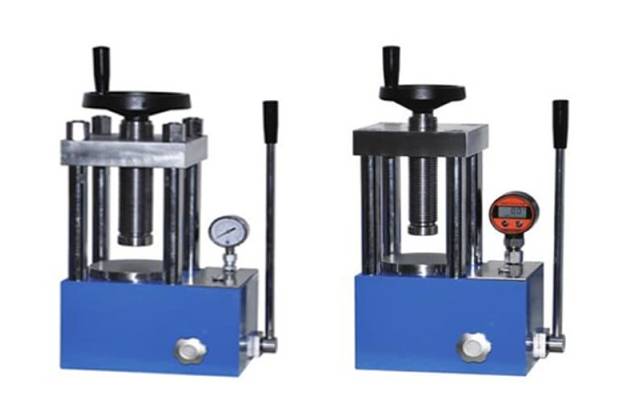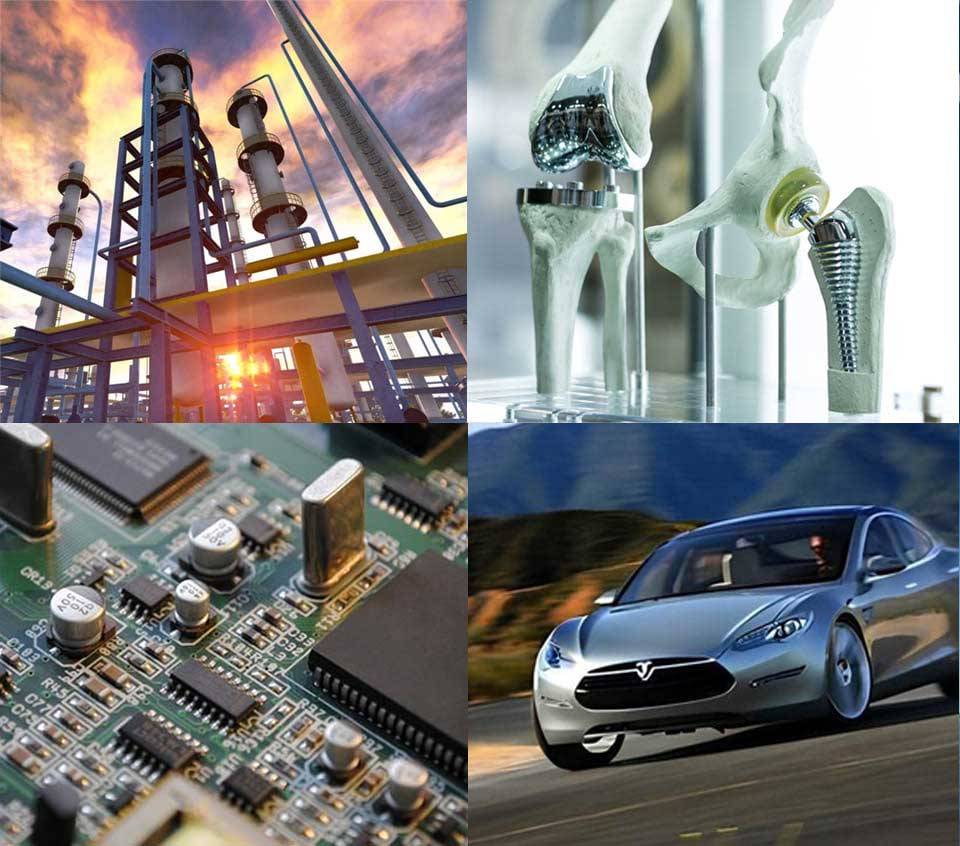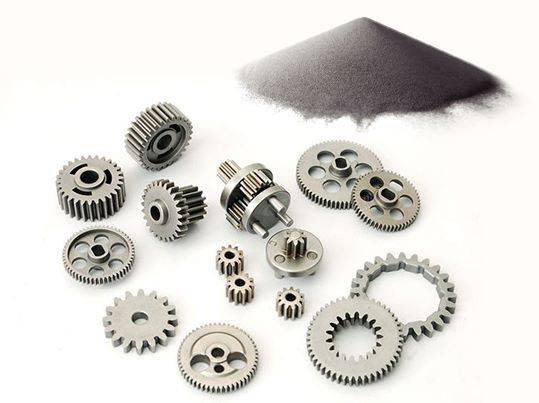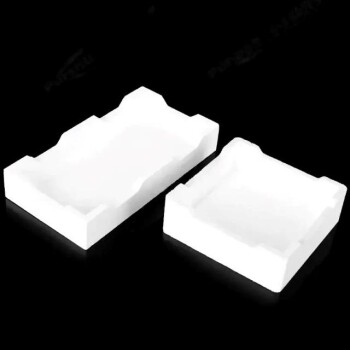Introduction to Hot Isostatic Pressing
Hot Isostatic Pressing(HIP ) is a technology used to densify materials at high temperatures and pressures. The process involves placing a material in a sealed container, which is then pressurized with an inert gas and heated to a high temperature. The combination of pressure and temperature causes the material to become more dense and uniform, with improved mechanical properties. HIP is used in a variety of industries, including aerospace, defense, and medical. The technology has become increasingly popular in recent years due to its ability to produce parts with optimal microstructure uniformity.
Table of Contents
Cold vs. Hot Isostatic Pressing
Isostatic pressing is a powder metallurgy process that applies equal pressure in all directions on a powder compact, achieving maximum uniformity of density and microstructure without the geometrical limitations of uniaxial pressing. Cold isostatic pressing (CIP) is used to compact green parts at ambient temperatures, while hot isostatic pressing (HIP) is used to fully consolidate parts at elevated temperatures by solid-state diffusion.
Cold Isostatic Pressing (CIP)
CIP is carried out at room temperature and is cheaper and simpler than HIP. It is generally used for materials that are temperature-sensitive, such as ceramics and metal powders. CIP can also be used to compress difficult-to-press materials, powders can be isostatically pressed dry without water, lubricants, or binders. Compared with cold pressing, isostatic compaction applies pressure uniformly over the entire surface of the mold, eliminating die-wall friction, which exerts a major influence on the density distribution of cold-pressed parts. The elimination of die-wall lubricants also permits higher pressed densities and eliminates problems associated with lubricant removal prior to or during final sintering.
Hot Isostatic Pressing (HIP)
HIP, on the other hand, is carried out at high temperatures. The high temperatures used in HIP allow for better diffusion of atoms and improved homogenization of the material. The process is particularly useful for parts that need to withstand high levels of stress or temperature. HIP is able to achieve a more uniform microstructure than CIP, resulting in improved mechanical properties such as impact resistance, ductility, and fatigue strength. It also allows for the elimination of residual stress in the material.
Which Method to Choose?
The choice between CIP and HIP depends on the specific needs of the material and the intended application. CIP is suitable for materials that are temperature-sensitive or for compressing difficult-to-press materials. It is also cheaper and simpler than HIP. However, it may not be suitable for materials that require high levels of uniformity and refinement. HIP is suitable for materials that need to withstand high levels of stress or temperature. It is able to achieve more uniform microstructure than CIP, resulting in improved mechanical properties. However, it is a more expensive and complex process than CIP.
In summary, while both CIP and HIP have their advantages and disadvantages, the choice between the two methods should be based on the specific needs of the material and the intended application.
Densification Treatment with Hot Isostatic Pressing
Hot isostatic pressing (HIP) is a powerful technique for achieving optimal microstructure uniformity in materials. HIP is a process used to improve the properties of materials by subjecting them to high temperature and pressure simultaneously. It is a densification treatment that utilizes a combination of high pressure and high temperature to eliminate porosity, close cracks, and homogenize the microstructure of materials.
The Hot Isostatic Pressing Process
The hot isostatic pressing process involves placing the material in a pressure vessel and then heating it to a temperature that is high enough to allow for densification. The pressure inside the vessel is also increased to a level that is high enough to deform the material and fill any voids present. This process is commonly used for manufacturing complex shaped components with high density and uniform microstructure. HIP can be used on a variety of materials including metals, ceramics, and composites.
Benefits of Hot Isostatic Pressing
HIP is widely used in many industries, including aerospace, automotive, medical, and energy. The benefits of HIP include improved mechanical properties, increased fatigue resistance, and enhanced corrosion resistance. By using HIP, manufacturers can produce materials with high quality and consistency, which can ultimately reduce the cost of production and improve product reliability.
Hot Isostatic Densification Process
The hot isostatic densification process is to place the products into the closed container, and input high pressure argon gas into the container through the compressor, while heating through the heating furnace inside the container, so that the products can be densified under the action of high temperature and high pressure at the same time. The same pressure is applied uniformly to the surface of the part from all directions, resulting in a uniform internal organization of the material. After hot isostatic pressing treatment, the wear resistance, corrosion resistance, and mechanical properties of the material will be greatly improved, and the fatigue life can be increased by 10~100 times.
Hot Isostatic Pressing Equipment

Hot isostatic pressing equipment consists of a high-pressure vessel, heating furnace, compressor, vacuum pump, storage tank, cooling system, and computer control system, where the high-pressure vessel is the key device of the whole equipment. The capacity of the equipment varies from small-sized hip, medium-sized hip, and large-sized hip, and can be used in various end-user industries such as manufacturing, automotive, electronics and semiconductor, medical, aerospace and defense, energy and power, research and development, and others.
Conclusion
In conclusion, hot isostatic pressing is a versatile and effective technique that has revolutionized the manufacturing industry by providing a reliable means of achieving optimal microstructure uniformity in materials. It is widely used in many industries due to its ability to improve the mechanical properties of materials and enhance their resistance to fatigue and corrosion. Hot isostatic pressing equipment is available in different capacities, allowing manufacturers to produce components of varying sizes and shapes.
Isostatic Pressing in the Aerospace and Defense Industry
Isostatic pressing has become an indispensable process in the aerospace and defense industry, and it is widely used to produce high-performance materials that are more resistant to fatigue, corrosion, and extreme temperatures. The technology has enabled manufacturers to produce high-quality materials that are more durable and reliable, and it is particularly useful for components that require complex shapes or are made from difficult-to-machine materials.
Hot Isostatic Pressing (HIP) in Aerospace and Defense Industry
Hot Isostatic Pressing (HIP) is one of the most commonly used isostatic pressing techniques in the aerospace and defense industry. It involves subjecting a material to high temperatures and pressures in an inert gas environment to eliminate any voids or defects in the material. The use of HIP has become increasingly popular due to the growing demand for stronger and more durable components in the aerospace and defense industries.
HIP for Achieving Optimal Microstructure Uniformity
HIP is a critical process in the aerospace and defense industry for achieving optimal microstructure uniformity in components such as turbine blades and structural parts. The process can eliminate internal defects caused by uneven cooling rates during the forming process, resulting in a more uniform and dense material that is better able to withstand extreme conditions.
HIP for Complex Shapes
The unique benefits of isostatic pressing, such as its ability to apply a uniform, equal force over the entire product regardless of shape or size, make it particularly useful for producing complex-shaped components in the aerospace and defense industry. The process removes many of the constraints that limit the geometry of parts compacted unidirectionally in rigid dies.
HIP for Difficult-to-Machine Materials
HIP is also used in the aerospace and defense industry to produce components made from difficult-to-machine materials such as superalloys, titanium, tool steels, stainless steel, and beryllium. The process is highly efficient in utilizing these expensive materials, and it can produce high-quality materials that are more resistant to fatigue, corrosion, and extreme temperatures.
HIP for Medical Industry
HIP is not limited to the aerospace and defense industry and is also used in the medical industry to produce implants and other devices that require high levels of strength and durability. The technology can produce high-quality materials that are more resistant to corrosion and wear, reducing the need for frequent replacements.
In conclusion, isostatic pressing, and specifically, Hot Isostatic Pressing (HIP), is a crucial process for achieving optimal microstructure uniformity in high-performance materials in the aerospace and defense industry. The technology has greatly improved the quality and durability of components and is widely used to produce complex-shaped components and difficult-to-machine materials.

Investment in HIP Technology
Hot Isostatic Pressing (HIP) technology has become increasingly popular due to the numerous benefits it provides. The following are the reasons why investing in HIP technology is a wise decision:
Improved Material Properties
By using HIP technology, manufacturers can achieve excellent material properties such as improved strength, corrosion resistance, and fatigue life. The process is also effective in eliminating porosity, voids, and cracks that may have occurred during the manufacturing process. As a result, the material produced is of high quality and meets the stringent standards of many industries.
Cost-Effective Method
Investment in HIP technology is a cost-effective method of producing high-quality materials. The process allows manufacturers to achieve optimal microstructure uniformity, which reduces the need for additional processing steps, thereby saving time and money. Additionally, the technology can be used to repair and refurbish damaged or worn-out parts, thus extending the lifespan of critical components.
Versatile Applications
HIP technology can be used in a wide range of applications, making it a valuable investment for various industries. It can be applied to the manufacture of large and massive near-net-shape metal components such as oil & gas parts weighing up to 30 tonnes or net shape impellers up to one metre in diameter. It can also be used to make small cutting tools such as taps or drills made from PM HIP semi-finished products, which can weigh less than 100 grams, or even very tiny parts such as dental brackets.
Complementary to other PM Processes
HIP technology is very complementary to other powder metallurgy (PM) processes such as Metal Injection Moulding (MIM), pressing and sintering, or the new additive manufacturing technologies. It can be used in combination with these PM processes for part densification and the production of semi-finished bars or slabs.

Increased Productivity
Investing in HIP technology can help increase productivity due to its ability to produce high-quality parts in a shorter time frame. The technology is capable of achieving 100% densification in a single step, thereby reducing the need for multiple processing steps. This results in higher productivity and faster turnaround times.
In conclusion, investing in HIP technology is a wise decision for any manufacturer looking to produce high-quality materials and increase productivity while saving time and money. The technology's versatile applications, cost-effectiveness, and ability to produce high-quality parts in a shorter time frame make it an invaluable tool for various industries.
Related Products
- Automatic Lab Cold Isostatic Press CIP Machine Cold Isostatic Pressing
- Automatic High Temperature Heated Hydraulic Press Machine with Heated Plates for Lab
- Vacuum Induction Melting Spinning System Arc Melting Furnace
- Non Consumable Vacuum Arc Induction Melting Furnace
- HFCVD Machine System Equipment for Drawing Die Nano-Diamond Coating
Related Articles
- Automatic isostatic press operation steps
- Exploring the Applications of Isostatic Pressing
- Cold Isostatic Pressing (CIP): A Proven Process for High-Performance Parts Manufacturing
- Application of Hot Isostatic Pressing Technology in Nickel-Based Casting High-Temperature Alloys
- Additive Manufacturing for Isostatic Pressing: Bridging New Technology with Traditional Manufacturing



















